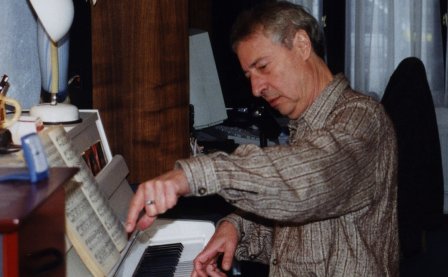In Yukio Ninagawa’s 2004 production of Hamlet, actors executed wonderfully theatrical displays across a jet-black set, void of any decoration or obstruction bar a profusion of lengthy barbed-wire strands that stretched from stage to ceiling. Each filament tackled various angles and thickness, imposing a silent, metallic violence on both audience and cast as the performers played around its vicious spirals. Despite the minimalist approach to set design and prop use, one of the greatest works in documented theater was re-imagined through the constrictive presence of fencing hardware, out of context and brimming with supplication.
When Eli Keszler organizes piano wires that run the course of his sound exhibitions, he is not just attentively manipulating them by reconfiguring their sound; alternate contexts are arranged from the bowels of traditional musical instruments and spread across spatial canvases that become integrated with each composition. Where Ninagawa’s cast were instructed to bound and shimmy between rigid strips of reconditioned barbed wire that physically constricted their performance space, Keszler completely distorts his materials to create sounds intrinsic to his art in such a way that they become unraveled, complementing objects that encompass them as opposed to causing an obstruction.
But this only constitutes a foundational layer of depth within the music offered here, for despite his multi-instrumentalist capabilities, Keszler is primarily a percussionist. The use of wires in his work create a stave on which his notes, formed from rampant striking, are inscribed. “Collecting Basin,” the closing piece on disc two of Catching Net, is a reference to the water purification facility at the McNeil Street Pumping Station in Louisiana, home of the primary installation, where a number of piano wires varying in length were exhibited and “struck with motorized beaters […] triggered from a micro controller system.” The affect on the recording is a haunting one, which contrasts the arresting abstraction of the original idea and immediately calls into question the validity of documenting a sound installation to begin with.
The sonic experience remains most riveting throughout the entirety of this collection, which guides the listener towards subjective and transient visualizations, despite uncovering initial methods on recording setups. Catching Net embodies the documentation of exhibitions that were initially intended to be experienced in the flesh, as opposed to spanning an album of original material. And though these tracks were part of singular performances, the very fact that they were recorded is an indication their results were meant for playback.
Both discs provoke similar emotional responses through the sounds that are conveyed, but the models they adhere to are very different. The title track embodies string arrangements and piano keys, which rest upon the dirge of vibrating cables — it sounds industrial, a vacuous churning. The compositions are dramatic and semi-improvised, illustrating a range of provocative images, like a million tungsten tips dropping to the floor at different speeds and landing on a pile of broken string instruments. Bass threads give “Cold Pin 1” a woeful feel, while frantic percussion and sluggish trumpet contributions exemplify a constant clash in stamina. A feeling of immense anxiety and unease is carved through atmospherics and delivery, like a screeching portal that never fully opens. Fear suppresses the desire to discover what is on the other side, but the suspense eventually subsides; when the percussion returns, it comes as a relief.
As conceptually experimental pieces, the invocation of images for circumscribing resonance to sound becomes second nature. Visual transgressions are consequential to the drama and vitality expressed here, manifest in a corollary of appropriation, a daydream sequence. “Cold Pin 2” is mechanical rain that can be physically felt — standing alone on the pavement with no light in the sky, torrential precipitation dashes a tin roof, a man from the restaurant opposite takes out evening trash, while faint and distant trumpet purr can be heard from a jazz club uptown. A pocket watch goes berserk.
These tumbling and turbulent instances constitute a reflection of the artist’s mettle. They amplify portions of his character, charisma, and energy, which are personified through the rapidity of symbols that crash, trumpets that dirge, and lines that twang — which on “Cold Pin 3” insinuates a running motor, tough and sturdy, then, masses of falling cutlery. Keszler describes these moments as “tiny little attacks” that are used to support the longer, more drawn-out sounds. It may feel as though one is under fire at the time, but like the abounding rain, each siege allows for growth and evolution. This forged realm is both luscious and full of promise.
The audacity of each composition in its original incarnation might be somewhat quashed through playback, but Keszler’s ambition permeates above all else. His electronic abstinence amplifies conviction in conveying precise moods that he wishes his audience to explore, and this is achieved to heart-stirring affect. Sounds are nurtured here in organic forms that grow, breathe, and mutate as extensions of interaction the artist has with the instruments and objects he manipulates. This is a wonderful environment to explore sonically, and these recordings allow for a most preeminent exemplification of forbearance, while simultaneously splitting the ears of the groundlings.
More about: Eli Keszler




